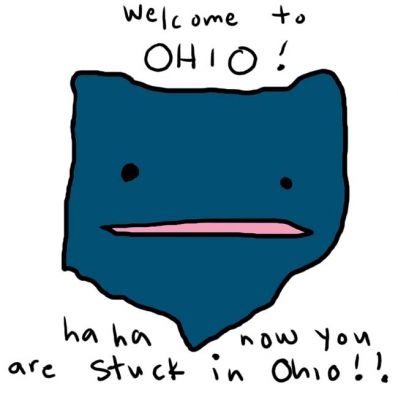 For nine years, Bowling Green State University professor Victoria Ekstrand lived in New York City and, for most of that time, she worked for The Associated Press. Then she moved to North Carolina to do her doctorate in order to go into teaching.
Now, she has spent five years living in northwestern Ohio, a region that she calls -- hang on for the graceful image of the week -- the "land of the potluck dinner." This is the part of the country that major-media reporters like to fly into in order to cover an event and then they fly right back out before much of the facts, emotions and stories of the region actually sink in.
For nine years, Bowling Green State University professor Victoria Ekstrand lived in New York City and, for most of that time, she worked for The Associated Press. Then she moved to North Carolina to do her doctorate in order to go into teaching.
Now, she has spent five years living in northwestern Ohio, a region that she calls -- hang on for the graceful image of the week -- the "land of the potluck dinner." This is the part of the country that major-media reporters like to fly into in order to cover an event and then they fly right back out before much of the facts, emotions and stories of the region actually sink in.
That short, vivid, wonderful image is found in an important Columbia Journalism Review essay by Michael Massing. The title is blunt: "Missing Middle."
The hook for the story is that Massing did one of those fly-in jobs, visiting Bowling Green for two days to do a speech. He's been thinking about his visit to flyover country ever since.
What, he asks, would mainstream media coverage look like if a really powerful news force -- like a television news network -- was based in the heart of the heartland? How would its coverage be different? He's talking about the Midwest. He can throw in most of the Bible Belt, while he's at it.
Here is the very first thing that Massing writes, as he struggles with this puzzle:
If a national paper or network were based in the Midwest, what stories would get more attention?
Religion, for one. Midwesterners (like southerners) tend to be far more godfearing, churchgoing, and tithe-giving than people on the East or West coasts. They also tend to adhere to more evangelical forms of their faith. To the extent that America has in recent years been undergoing another Great Awakening, as many observers believe, it arose in part in the megachurches and seminaries of Indiana and Illinois, Kansas and Kentucky. As that wave spread across the country, it helped shift the center of the nation's political gravity to the right. The effect has been especially noticeable in the Republican Party, moving it from the moderate Episcopalianism of George H.W. Bush to the born-again Methodism of George W. Bush. Editors and reporters in New York, Washington, and Los Angeles were late in grasping that and have had to play catch-up. A national news organization based in the Midwest would have been on to this change from the start.
By George, I think he gets it.
There's a lot more and none of it is directly -- repeat directly -- linked to the religion gap. But I was struck by another powerful section of his piece. So if the major media just don't get the heartland, why don't they hire more reporters from that region?
As it turns out, there's a problem. Sit down, because you aren't going to believe this part:
During my visit to Bowling Green, several faculty members told me of the frustration they'd had in trying to place their students in internships at top-tier news organizations. Even an in-state paper like the Toledo Blade, I was told, often seemed to prefer Ivy League grads.
There's more. Please read it all and, when you are done, print out a copy and hand it to an editor near you.
